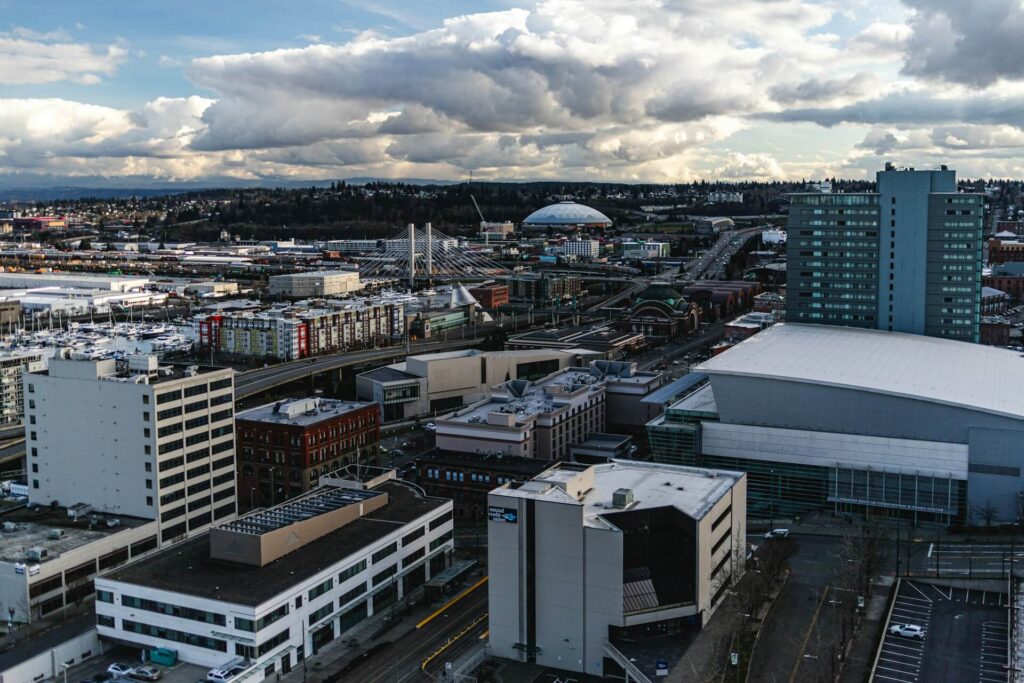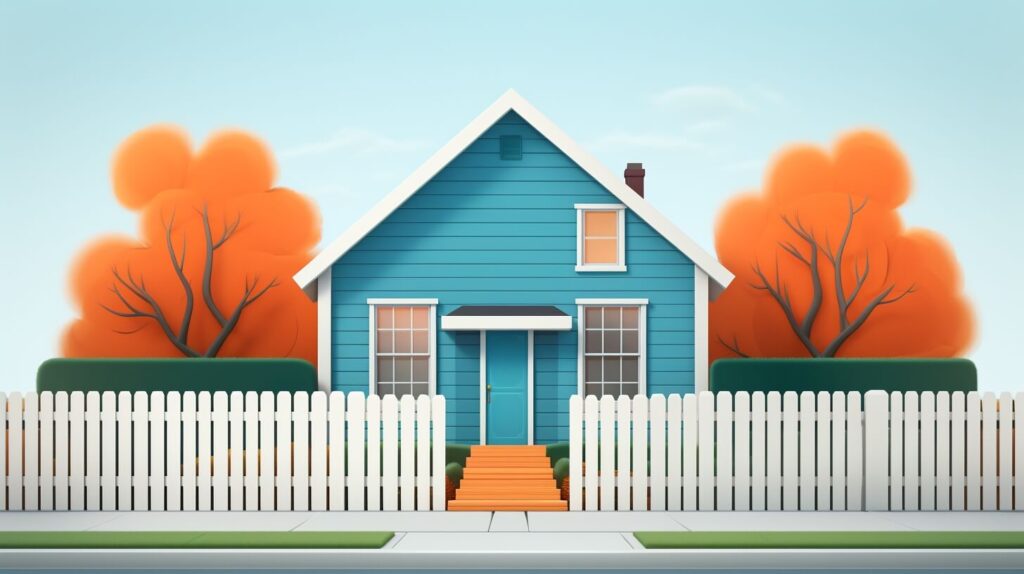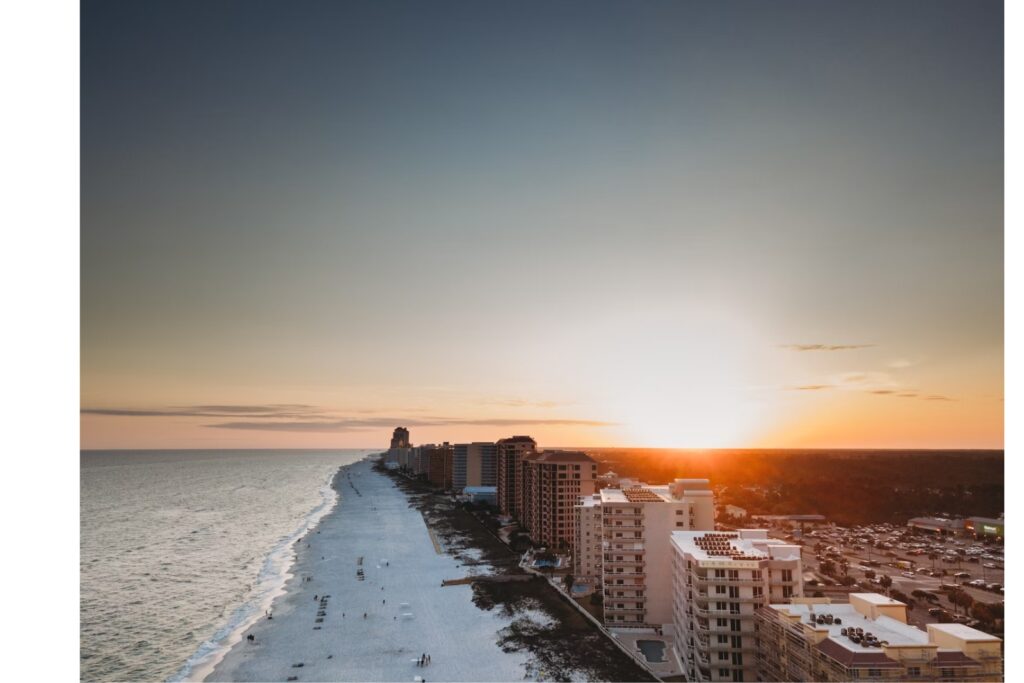
We are reader-supported. When you buy through links on our site, we may earn an affiliate commission.
What is the cost of living in Washington State? Annual expenses will significantly depend on the location. The home of the Space Needle and delicious apples is a desirable Pacific Northwest location, so budgeting for your move is essential. From rent to transportation, these costs can add up quickly. Here’s a guide to the beautiful Evergreen State.
Washington State Cost of Living Metrics

Imagine a place with cool weather, no income tax and access to the Pacific Coast. If these characteristics are enticing, Washington State could be the answer. Here’s what you need to know about this northwest state.
1. Housing
Is it expensive to live in Washington state? For the most part, you’ll pay a premium for housing. Zillow says the average home value is $611,096 — a 0.4% increase from 2024. The median list price rises to $639,658, but it’s a different story for the actual transactions. Zillow experts determined the median sale price to be $591,658.
Living in Washington State has become more expensive because of its location and job opportunities. For example, the tech sector has six-figure earners residing in Seattle and Tacoma. These employees can earn over $100,000 annually, thus driving up prices and demand. It’s not the most expensive state, but it’s up there.
2. Rent
Some people aren’t ready to buy homes yet, or they only need temporary living situations. Renting in the Evergreen State is typically pricy, though it depends on the area. However, the cost of living in Washington State is getting easier for renters due to newly enacted laws. In 2025, the governor signed a bill capping rent hikes at 10% to help residents.
Still, renting isn’t exactly necessarily cheap in the Pacific Northwest. Rent Cafe estimates the average rent is $2,051 for an 830 square-foot apartment. That’s about $300 more than the national average, so living here is expensive. It even outpaces its southern neighbor, Oregon, where residents pay about $1,760 monthly for rent.
3. Taxes

While housing expenses are high, the monthly cost of living in Washington State is less expensive than you think. The state hasn’t had an income tax in its 136-year history, thus putting more money in your pocket. Washington’s constitution would require an amendment to implement such a levy, so it might be a while before that comes to fruition.
Washington has other ways of raising revenue, such as sales, property and excise taxes. Overall, the tax burden ranks 28th, according to a recent WalletHub survey. Residents pay a 2.64% property tax and a 5.97% fee for total sales and excises. While the home of the Seattle Seahawks seems expensive, it can save money in other areas.
4. Transportation
Transportation costs in Washington depend on your area and how you get around. If you live in Seattle, you might be able to use public transportation and avoid owning a car. King County residents can acquire monthly Metro passes for $99 and get unlimited rides on the bus or subway system.
You may need a car to get around if you live outside Washington’s metro areas. It’s among the most electric vehicle-friendly states, so getting a Mercedes-Benz EQS Class or a Hyundai Ioniq EV is realistic. The state has an interesting approach to EVs — instead of getting rebates, residents don’t pay sales tax on the first $45,000 of the car.
5. Utilities
Utilities are different in Washington than in most other states, especially if you live in Seattle. The large city uses hydroelectric power for clean energy in its commercial and residential buildings. Renewables are more prominent in the Pacific Northwest, so it’s typical to see solar panels on rooftops and wind turbines on farms.
While the cost of living in Washington is higher, it has relatively cheap electricity rates. The Energy Information Administration says residents pay 13.67 cents per kilowatt-hour, a more affordable rate than in numerous states. In fact, utility expenses are cheaper than in Alabama and Kentucky. While electricity prices have increased since 2022, it’s still affordable in Washington.
6. Insurance
Insurance costs are rising nationwide, and Washington isn’t an exception. State officials say automotive claims increased from $3.5 billion in 2020 to $5.4 billion in 2024. Therefore, Washingtonians are paying more for car and home insurance. Increases also derive from wildfires, which have recently devastated the Pacific Northwest.
Health insurance is another significant cost for Washington, considering its national ranking. A 2025 WalletHub report revealed Washington ranked 45th in costs and 44th in access, so you may be paying high premiums. However, its eighth-place ranking for outcomes is commendable, meaning its people are generally healthy.
Average Cost of Living in Washington State Metro Areas
Moving to Washington State should include knowing the cost of living in the major cities. Here are a few metro areas to remember.
Seattle

It’s no secret that Seattle is expensive, considering it’s popular for parents, young people and nature lovers. NerdWallet says the median salary is nearly $62,000, and Emerald City is the ninth-most expensive city nationwide.
Tacoma
Tacoma is within the Seattle metropolitan area, though the cost of living in this Washington city is much different. Experts say it’s about 15% lower than Seattle, making it more affordable for those who want a city life without the sky-high prices.
Spokane
While the Pacific Coast cities are expensive, Spokane is a different story. This eastern Washington town is 3% cheaper than the national average, making it attractive to moving families. Housing, especially, is affordable, costing 16% less than the average U.S. town.
Cost of Living in Washington State FAQs
How much money do you need to live comfortably in Washington State?
Massachusetts Institute of Technology (MIT) says $26.36 per hour is the living wage in Washington if you’re one adult with no children.
Is it cheaper to live in Washington or California?
MIT has determined that $28.72 is the living wage for California residents. However, the comparison will depend on locations in each state.
Where is the cheapest area in Washington State to live?
MIT data shows that Okanogan County, between Seattle and Spokane, is the least expensive area in Washington State. In its towns, you need an hourly wage of at least $19.76 to make ends meet.







